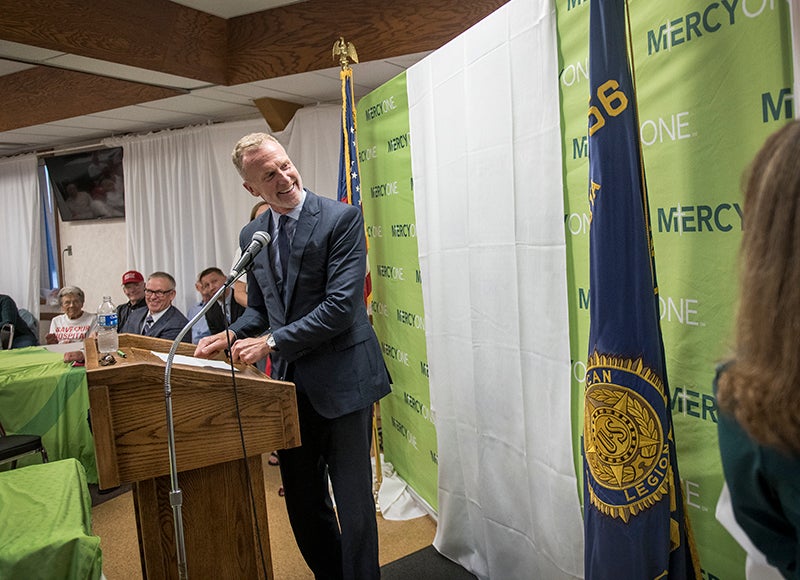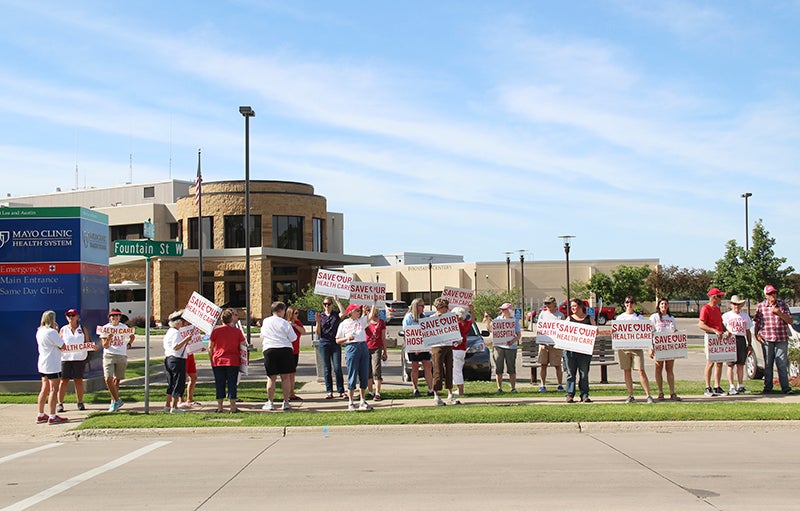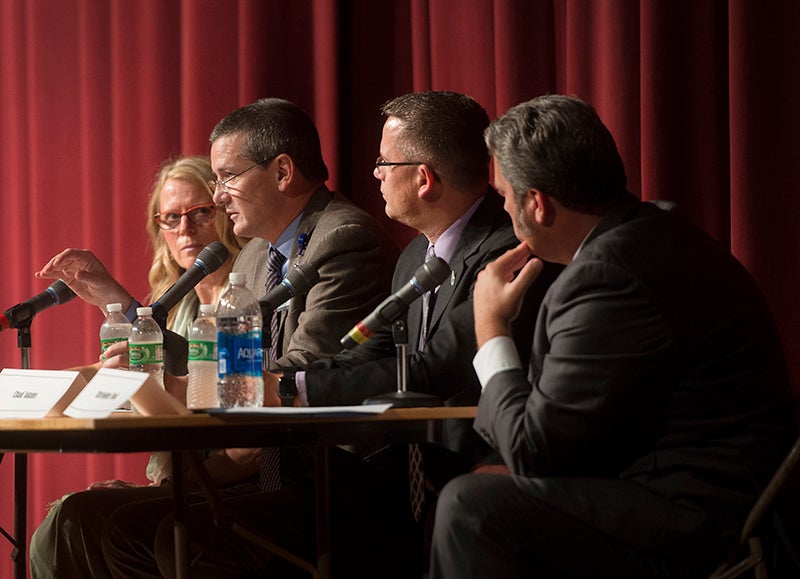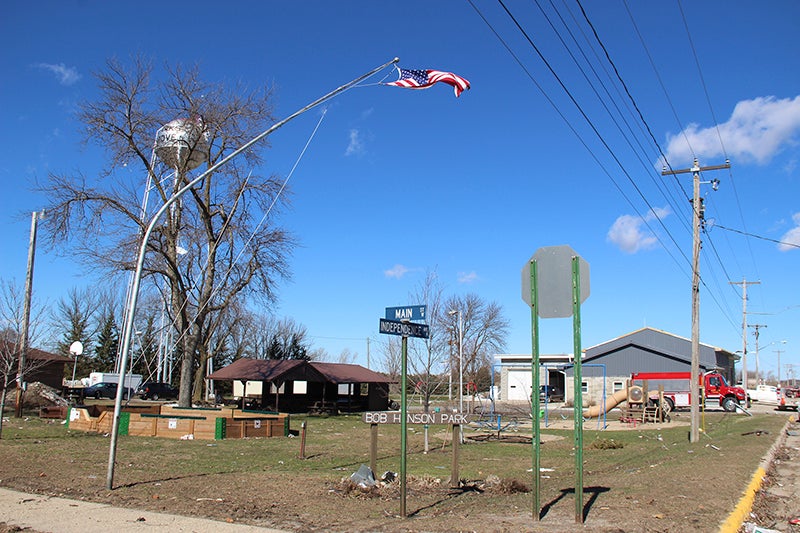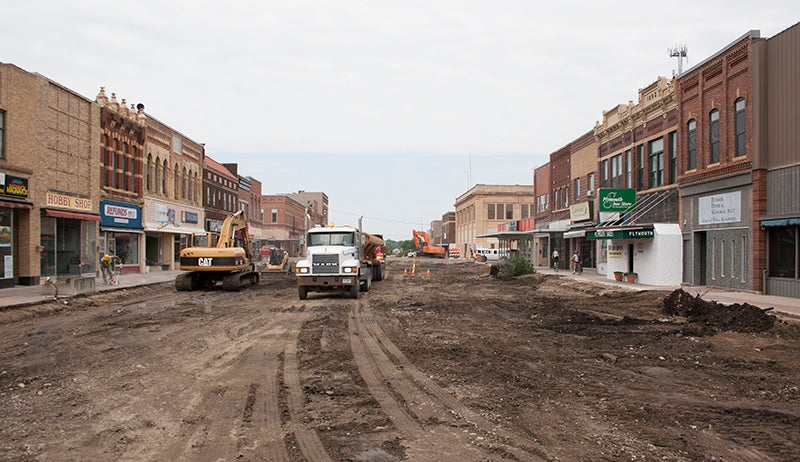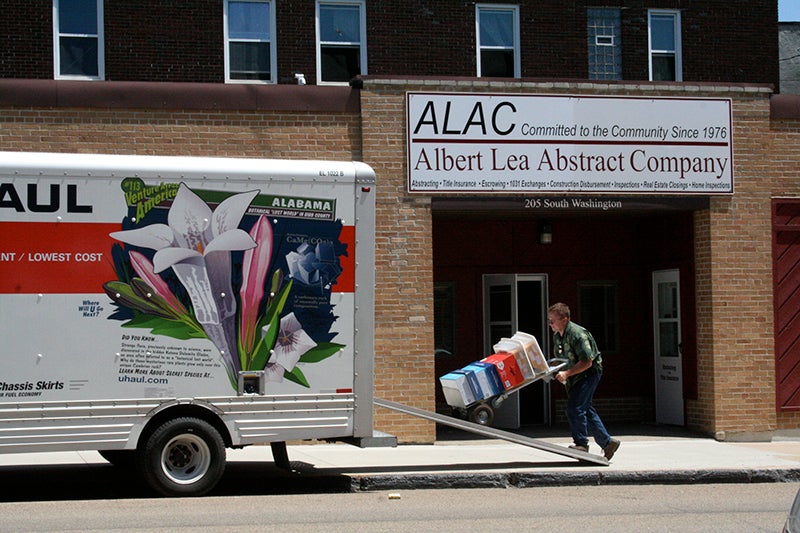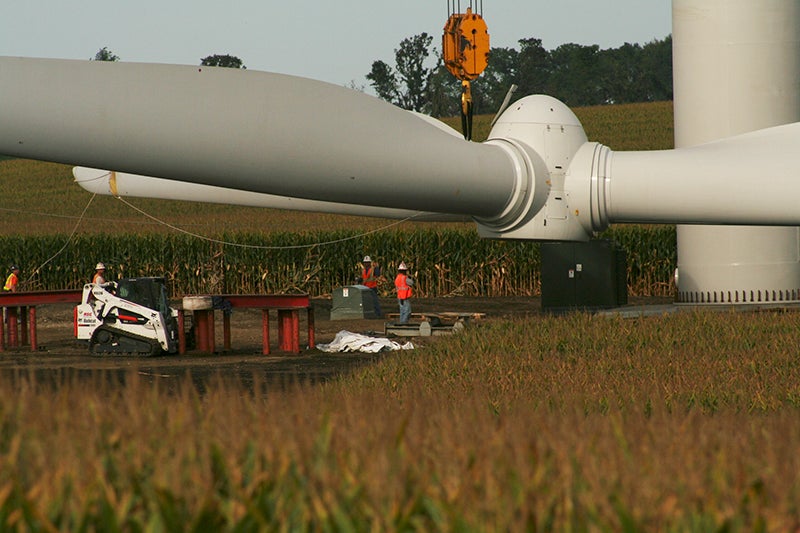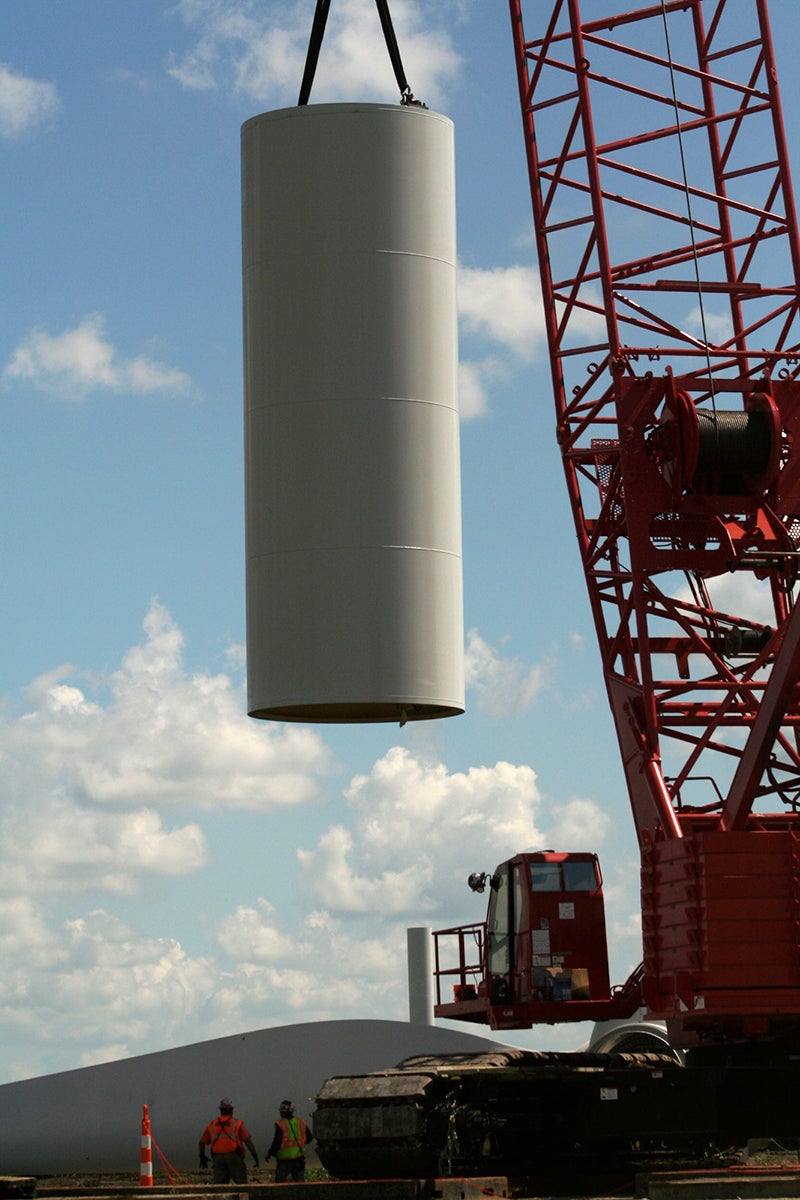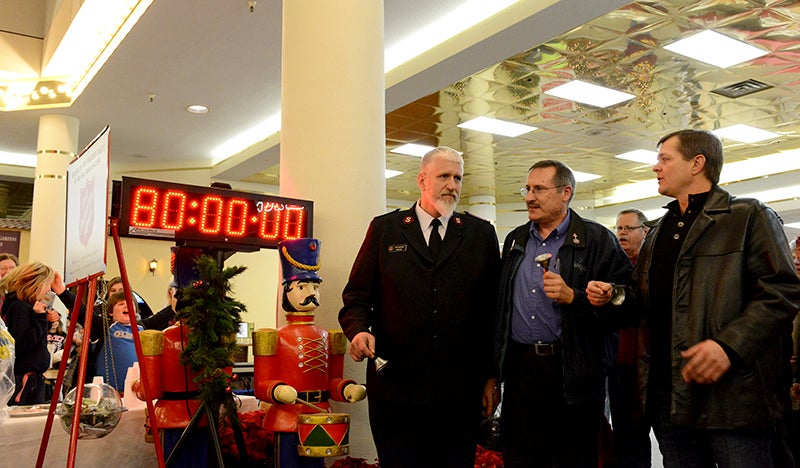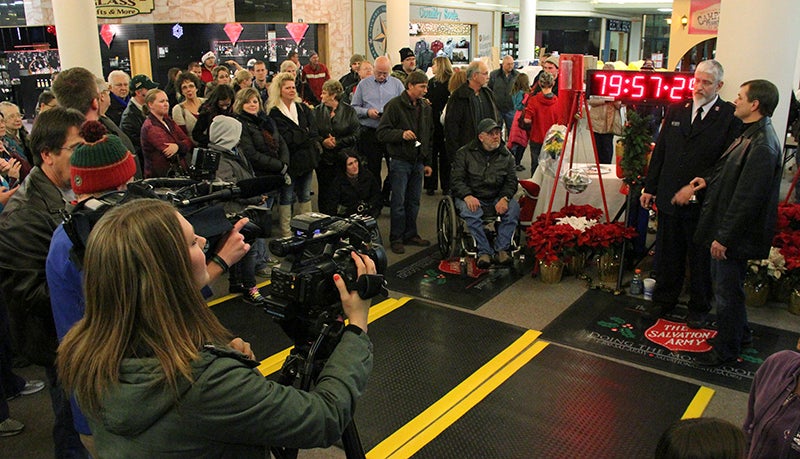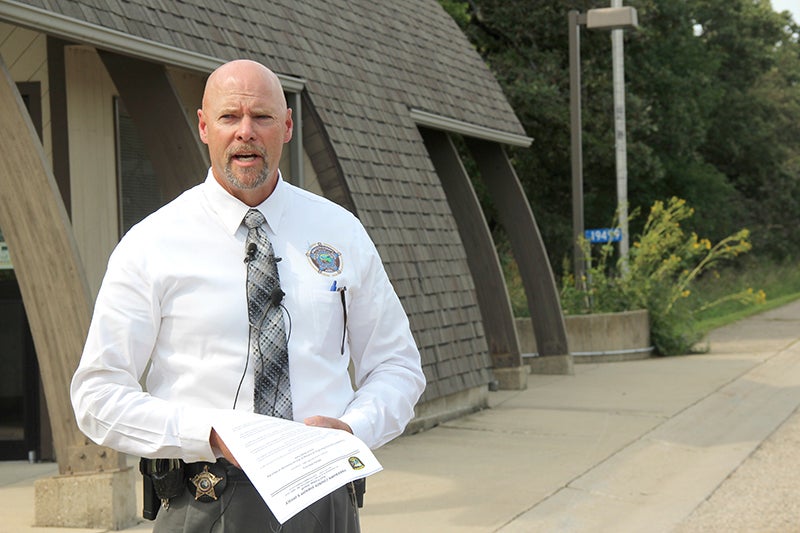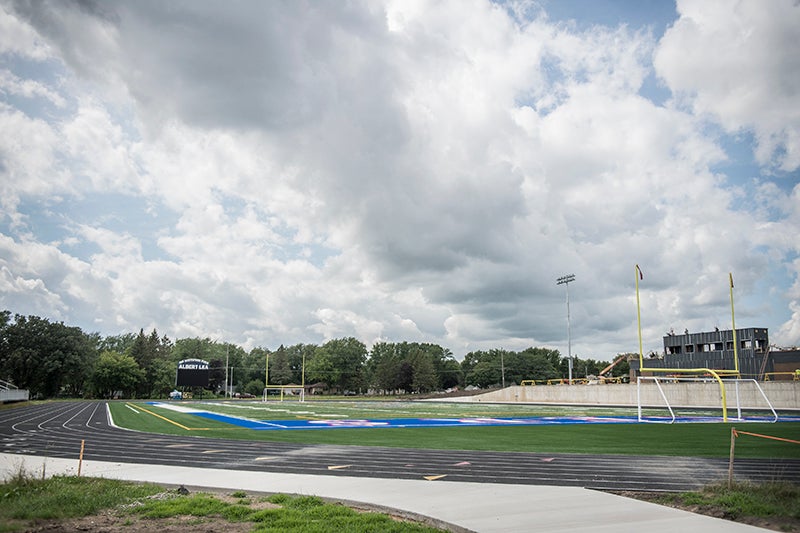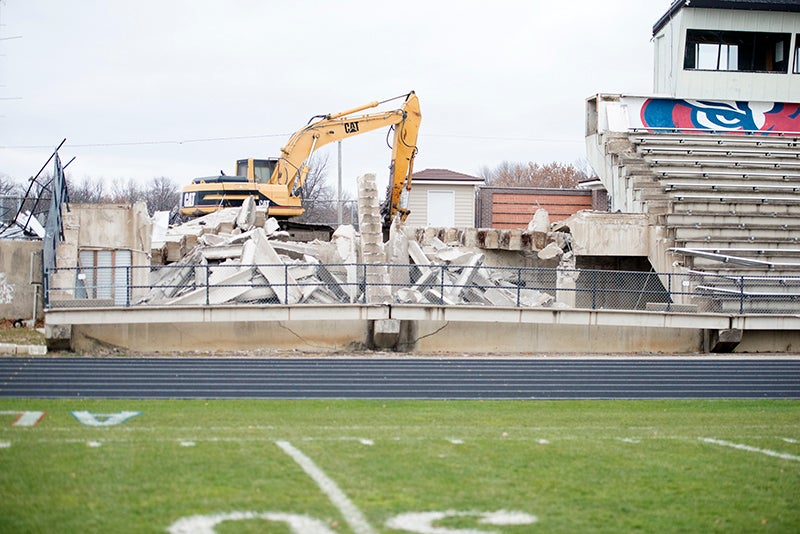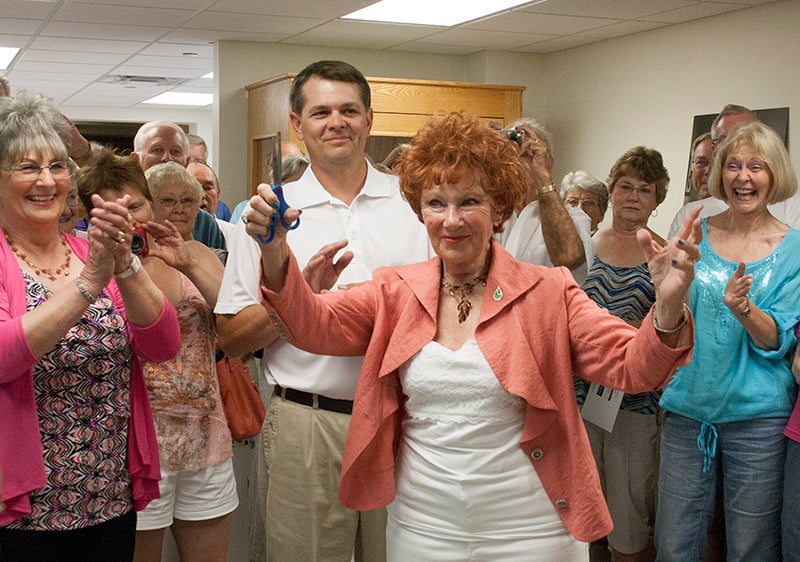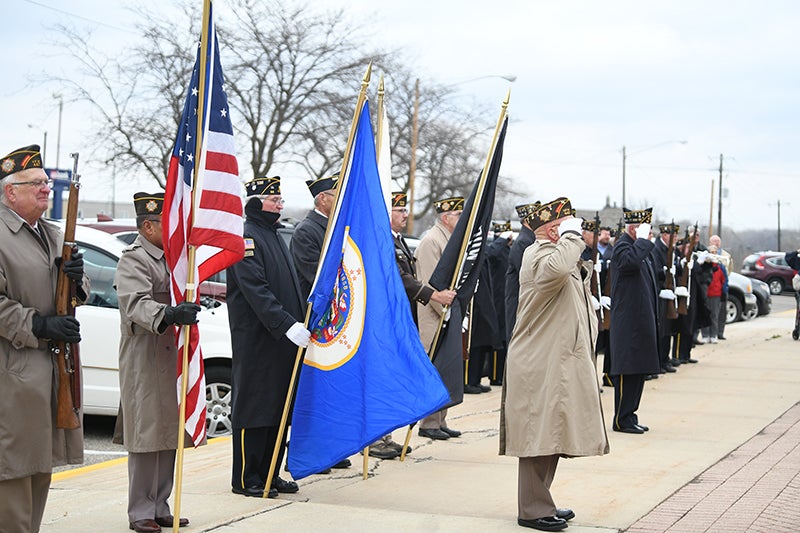2010s: A look back at the decade
Published 11:18 pm Wednesday, January 8, 2020
Events from the archives
The 2010s will go down in history as memorable years for area
The 2010s will be remembered in the Albert Lea area as a time of several big changes, but also a time where the community’s resiliency and perseverance were predominant.
Whether it was in response to Mayo Clinic Health System in Albert Lea’s decision to consolidate several inpatient services to Austin, in the aftermath of several large tornadoes that tore through Freeborn County or in the diligent effort to get state funding to dredge Fountain Lake, residents showed they can have a major impact when they come together.
The area also saw several changes for the good and bad in the retail landscape, the reconstruction of downtown Albert Lea and the construction and of a wind farm. It also had its share of crime and scandal and multiple instances of community members stepping up in the wake of tragedies.
The following is a compilation of big stories from the 2010s:
Most inpatient services in Albert Lea are moved to Austin; grassroots community group leads effort to bring services back to city
It came as a shock to most people when Mayo Clinic Health System leaders in June 2017 announced plans to move most inpatient services over time to the health system’s Austin campus.
That included major surgeries requiring hospitalization, overnight hospitalization and intensive care unit stays for illness and injuries, along with childbirth.
The hospital system said the changes were necessary as it faces staffing shortages, rising costs and declining reimbursements for its services.
More than 700 people attended a tension-filled public meeting later that month in the Albert Lea High School auditorium to find out more about the planned transition and to voice their frustrations with the decision.
Bobbie Gostout, vice president of Mayo Clinic and leader of Mayo Clinic Health System at the time, drew ire from the crowd when she compared traveling 23 miles — the distance between Albert Lea and Austin — for childbirth services to traveling the same distance to buy ice cream.
The statement became an initial quote blasted by a group of residents who formed the grassroots Save Our Hospital group.
As Mayo began moving forward with its plans, the residents began meeting weekly, filling the Albert Lea American Legion every Sunday night, as well as meeting multiple times throughout the week.
It brought together residents of all ages, backgrounds and political leanings.
They organized protests, both in Albert Lea and Rochester to voice their cause, and raised thousands of dollars. They reached out to newspapers, state and federal legislators, Minnesota Attorney General Lori Swanson and Minnesota Gov. Mark Dayton to share their stories and ask for help. The effort gained support from Dayton and Lt. Gov. Tina Smith, multiple DFL candidates for governor, as well as the senior advocacy organization AARP.
Despite the effort, Mayo officials moved forward with their plans.
In October 2017, the intensive care unit moved to Austin, followed by inpatient surgeries in the beginning of 2018. In the fall, the new inpatient behavioral health unit moved from Austin to Albert Lea.
Partway through 2018, Save Our Hospital changed its name to Save Our Healthcare with a shift in focus. Instead of attempting to get Mayo to stop the transition of services, it was focused on retaining health care services in Albert Lea and reducing health care costs — likely through a second provider.
The health system had initially stated it planned to move childbirth services to Austin in mid- to late 2020 but in June 2019 announced it was considering an expedited timeline for this consolidation because of a staffing shortage.
In July, officials with the health system confirmed labor and delivery services would transition in October 2019, and the unit closed to new patients at the end of that month.
As the plan continued rolling out for Mayo Clinic Health System in Albert Lea, community members who were part of the grassroots Save Our Healthcare organization continued meeting regularly, working to restore services and bring in a new provider.
In September, the nonprofit Albert Lea Healthcare Coalition announced MercyOne North Iowa will open a clinic in Albert Lea in summer 2020. Plans for the new clinic will be delivered in five phases — starting with a primary care clinic with enough space for visiting specialists and extended hours for urgent care, including the weekends. Future phases planned include additional specialists, imaging center and an ambulatory surgery center. Each phase will be implemented as goals for patient loads are achieved.
The coalition, which is made up of a group of business, community and civic leaders from Albert Lea and Freeborn County, announced in October its plans to purchase the former Herberger’s space at Northbridge Mall for the clinic.
The coalition will own the building and MercyOne will rent the space.
Deadly tornadoes devastate countryside in 2010; earliest tornadoes on record in state touch down south of Wells and in Clarks Grove
Dates come and go, but June 17, 2010, is a date that will stay in the minds of many Albert Lea Tribune readers for a generation. On that day, three thunderstorm cells produced tornadoes that devastated farms and homes in Faribault, Freeborn and Steele counties, including an EF4 tornado that killed a woman near Armstrong.
That same day, tornadoes touched down in northern Minnesota, hitting Wadena. In all, Minnesota had 25 tornadoes on one day, two of them reaching EF4 status. In August of that year, after piecing together what happened, the National Weather Service announced, “June 17, 2010, will go down as the day with the greatest single-day tornado total in Minnesota history.”
The deadly one landed as an EF4 one mile northwest of Mansfield and headed in a northeasterly direction. It struck the rural home of Ron and Kathy Woodside, killing her and severely injuring him.
The photographs of the no-man’s land were striking. Homes, trees, cars and barns were all smashed. Structures were completely off their foundation. Farm animals wandered free. People climbed out of their basements to find a devastated countryside. Tiny Armstrong was the only named place to get a direct hit. Other tornadoes came near Kiester, Conger, Albert Lea, Clarks Grove, Geneva, Hollandale, Lerdal, Alden, Freeborn, Ellendale, Beaver Lake and Hope.
People came from across the region to remove debris from fields, clean up destroyed acreages, feed and shelter others and give comfort.
Minnesota ended up leading the nation in tornadoes for 2010, with 145. It typically sees 27 a year. Texas was second with 105. Iowa was 11th with 52.
Freeborn County also saw damage from a tornado on March 6, 2017, when an EF1 tornado damaged several residences and businesses in Clarks Grove. The tornado reached wind speeds of 100 to 110 mph and was on the ground for 12.3 miles, according to the Weather Service. It traveled through the western part of the city before moving northeast through portions of Geneva and through northern Steele County.
At its max, the tornado was 300 yards wide.
Though it was initially thought that the tornado was the earliest in state history, the Weather Service announced later that month that a tornado that had torn through Pihls Park campground about 30 minutes earlier in the same day actually broke the record.
That tornado traveled 11 miles northeast before landing at Pihls Park, where it took down 30 trees and damaged several RVs. Pihls Park is on Rice Lake in Faribault County south of Wells.
State dredging funding approved; dredging begins on Fountain Lake
Gov. Mark Dayton on May 20, 2014, signed a bill into law authorizing $7.5 million in state funding to dredge Fountain Lake.
The Shell Rock River Watershed District and the community had requested the funds for six years, but it wasn’t until that year that they were successful — largely thanks to the assistance and persistence of state Rep. Shannon Savick, DFL-Wells.
Watershed and city officials repeatedly said the dredging project was necessary because Fountain Lake had become filled with sediment — as much as 5 to 8 feet in some areas. The accumulation had resulted in water quality impairment and large algae blooms.
Dayton visited Albert Lea in mid-June of 2014 for a ceremonial signing of the bill. About 80 people came to see Dayton speak at Edgewater Bay Pavilion.
Dredging started in summer 2018 on Fountain Lake’s Edgewater Bay.
The dredge, under the direction of dredging and marine construction company J.F. Brennan, arrived at the Edgewater Bay boat ramp May 30 of that year and began its first day of dredging June 13.
Dredging continued in 2019, and as of Nov. 1, over 617,000 cubic yards of sediment had been dredged from Edgewater Bay. Sediment is being pumped to a confined disposal facility north of Interstate 90, which is used to settle the sediment and siphon off the water.
The district approved another contract with J.F. Brennan Co. Inc. for the second phase of dredging, which will begin in the main bay and Dane’s Bay of Fountain Lake in 2020. Construction of the second and third confined disposal facilities was underway.
The Watershed District is seeking an additional $7.5 million in state bonding dollars for the third phase of the project. Watershed District Administrator Andy Henschel said in an interview in May that the initial project scope was for the removal of roughly one million cubic yards of material. After considering best management practices and deeper inlet areas, that number now looks closer to 1.7 million. Additionally, the price of sediment removal per cubic yard is higher than the district first assumed.
In addition to state bonding dollars, the project is being paid for with local option sales tax dollars.
Downtown Albert Lea reconstructed; many new businesses move downtown
It started as a controversial topic, but when the reconstruction of Broadway was completed in 2013, most people were celebrating the results.
The reconstruction project cost $4.6 million and was done initially because the 75-year-old sewer and water pipes underneath the street needed to be updated.
Everything was torn up, including the streets, sidewalks, lights and stop lights.
In addition to updated amenities, the street now has bumpouts at intersections, which shorten the distance to cross the street, along with new street lights, benches, trees and flower pots.
Fountain Lake Park off of North Broadway also saw the start of a reconstruction that year, too, and was finished in 2014.
The updated look to the downtown attracted more activity to the area, bringing in many new businesses in the last half of the decade. Several buildings downtown have since been renovated, including a portion of the former Freeborn National Bank building, which was sold to Albert Lea-based Mortarr, an online inspiration gallery and networking platform for the commercial construction and design industry.
Downtown also saw the popularity of downtown events grow, including Wind Down Wednesday, the festival that is held once a month during the summer.
In 2017, after more than a year of fundraising, a small committee of residents and a group of community leaders celebrated the opening of the new splash pad off of Fountain Street and north of the North Broadway parking lot.
The committee raised $152,000 in money and in-kind donations to make the project a reality. Some of the donations made were in honor of Sophie Stultz, an 8-year-old Albert Lea girl who was killed when she was struck by a car while riding her bicycle in July 2016 at the intersection of Eighth Street and Frank Hall Drive.
A separate committee is now raising money for a statue of actress Marion Ross outside the theater named in her honor on Broadway.
2 local government leaders face criminal charges
Freeborn County had its share of controversy with local officials in the first half of the decade when former Albert Lea City Manager Jim Norman was charged with misusing the city-issued credit card for personal purchases and Freeborn County Commissioner Linda Tuttle was charged with wire fraud for stealing more than $1 million from the escrow accounts in her business Albert Lea Abstract Co.
Norman started as city manager in August 2010 and by the end of that month, the then 56-year-old man was charged with misusing the credit card for what amounted to $2,300 in purchases during his relocation to Albert Lea.
Among the purchased items were a side-by-side refrigerator, groceries, shoes for his wife and hotel stays. He also received a monthly per diem for an automobile but allegedly bought gas with the card anyway. The investigation claimed Norman had financial problems.
He was placed on paid leave at the end of that month, and by the end of September, the Albert Lea City Council and Norman severed ties. Though the city requested the charges be dropped, they remained in place, and in November Norman pleaded not guilty to the charges. He repaid the money and said he had a misunderstanding of what relocation expenses included.
After a trial in May 2011, Norman was found guilty by a jury after three hours of deliberations on seven of eight charges against him.
The Minnesota Court of Appeals in 2012 upheld six felony charges against the former manager and reduced a gross misdemeanor charge.
Tuttle was elected to her seat as a Freeborn County commissioner in 2008 and in June 2010, she was charged — first in district court and then in federal court — with taking money from the escrow accounts through her business, Albert Lea Abstract Co., and diverting them to her own purposes, much of which went to pursue a gambling addiction at an Iowa casino.
In April 2011, Tuttle pleaded guilty to one count of wire fraud, a felony, as part of a plea agreement between her lawyer and the U.S. Attorney’s Office.
She was sentenced in August of that year to 3 1/2 years in federal prison and was ordered to pay full restitution of $1.32 million.
She served her sentence at the federal women’s prison in Alderson, West Virginia, and was on supervised release for three years after her release.
Albert Lea’s retail landscape changes
The 2010s brought major changes to Albert Lea’s retail industries, with the closure of national chain stores Herberger’s and Shopko at Northbridge Mall and the shift to more locally owned clothing boutiques and stores.
The Bon-Ton Stores Inc., owner of Herberger’s in Albert Lea, confirmed in April 2018 it would close all of its stores nationwide as part of a liquidation of the company’s assets. The announcement came after the company two months prior filed voluntary petitions for a court-supervised financial restructuring under Chapter 11.
Bon-Ton operated 250 stores in 23 states in the northeast, Midwest and upper Great Plains.
After almost 34 years in operation, Albert Lea’s Shopko closed its doors May 19, 2019, after filing Chapter 11 bankruptcy protection. The Green Bay, Wisconsin-based company stated excess debt and ongoing competitive pressures led to the filing, which was done in U.S. Bankruptcy Court for the District of Nebraska.
The company had initially started its closures with the termination of several of its pharmacies. Albert Lea’s Shopko pharmacy closed Jan. 3, 2019.
In addition to the Shopko pharmacy, Albert Lea also saw the closure of Sterling Pharmacy in September 2018, after being in the community since 1962, and Curt’s Pharmacy in November 2019, after being in the city for 16 years.
Despite the closure of several large retail establishments, there were several bright spots in the retail scene as well.
After more than 12 years of sitting vacant, the former Walmart building in western Albert Lea got new life when farm and ranch supply company Bomgaars signed a lease for the building at 1721 W. Main St. in 2016.
The lease runs for 12 years, after which the company will have the chance to extend the lease. The space had been abandoned in October 2003, when a Walmart Supercenter opened on Blake Avenue. Residents were excited to see the building put back into use.
In addition, the city saw the opening of several new locally owned boutiques, including Between Friends Boutique, The Homestead Boutique, Ellen & Jane Boutique and The Junktion Closet.
Bent Tree Wind Farm goes up; county, state approve Freeborn Wind Farm
Weeks after tornadoes changed the landscape in the Hartland-Manchester area of Freeborn County in 2010, Alliant Energy and contractor Barnhart Crane changed it once again when they began erecting a 200-megawatt wind farm.
The farm, which covers 69 square miles, is made up of 122 Vestas V82 turbines and powers 50,000 homes.
It was the first wind farm in Freeborn County.
Things didn’t go quite as smoothly for the Freeborn Wind Farm, which received more opposition at both the county and state levels.
After several setbacks and approval from the state, the Freeborn County Board of Commissioners in April 2019 approved the three-part agreement with Freeborn Wind Energy LLC for development, road use and drainage system protection for the farm.
The project, launched by Chicago-based wind developer Invenergy, includes 42 wind turbines in Hayward, London, Oakland and Shell Rock townships. Fifty-eight turbines initially included in the project have since been moved for development in Worth County.
Construction is slated to begin in 2020.
Salvation Army captain sets ringing record
Capt. Jim Brickson, administrator of the Albert Lea Salvation Army, set out to break the world record for ringing a Salvation Army bell in 2013 in an effort he dubbed Stand Up for Freeborn County.
To break the record, he had to ring for more than 80 hours, and he hoped to raise $24,000 in the process toward the red kettle campaign goal of $254,500.
The Tribune article about Brickson’s challenge was picked up by the Associated Press and spread across the country. Brickson was interviewed by Headline News, BBC, PBS, Fox News and TV stations in the Twin Cities, New York and San Diego.
All competitors for the record began at 11 a.m. Dec. 3, 2013. Brickson competed against Salvation Army Maj. Marcelino Soriano in Colton, California; Andre Thompson in Tyler, Texas; Darrel Tureskis in Springfield, Illinois; Capt. Emily Jones in Compton, California; Lt. Rob Lawler of Helena, Montana; and Quinton Green of Hanford, California.
By the second day, three remained: Brickson, Soriano and Thompson.
All three broke the world record at 7 p.m. Dec. 6, 2016. About 150 people gathered at the center court of Northbridge Mall that evening to watch Brickson surpass the record. With him were several mayors of Freeborn County, and Brickson increased his goal to $35,000.
The bell-ringing competition ultimately ended in a three-way tie, as the men agreed to stop at 8 p.m. Dec. 7 after 105 hours.
Man murdered at Myre-Big Island State Park
A place where people go to enjoy the outdoors became the site of a homicide investigation in August 2016 after the Freeborn County Sheriff’s Office received a report of a man who had been shot and killed at Myre-Big Island State Park.
Authorities arrested David Michael Easter in connection with the shooting death of Spencer Daniel Brown of rural Freeborn County.
Authorities state Brown was found dead in a locked 2001 Audi station wagon in a parking lot near the Big Island pavilion after dispatchers received a 911 call from Easter. Brown suffered from two gunshot wounds to the head.
The car’s doors were locked, and the vehicle was in reverse at the time it was found. Brown’s foot was on the brake of the vehicle.
Easter reportedly told dispatchers he had shot Brown in self-defense and claimed Brown approached him with what appeared to be a bat. Easter’s wife and infant daughter were also reportedly at the pavilion at the time of the shooting and were not injured.
Easter was found guilty of second-degree murder after a jury trial the following year and was sentenced to more than 25 years in prison.
Easter filed an appeal, but it was rejected by the Minnesota Court of Appeals.
Voters approve $24.6 million Albert Lea Area Schools referendum for facilities upgrades
Voters in the Albert Lea school district in 2018 approved a $24.6 million referendum, most of which has gone toward a series of updates at Hammer Complex, including the football, soccer and softball fields, as well as the home stands and a new two-story field house.
The money also supported an addition at Halverson Elementary School that increased gym space and security at the school and finished two tasks at Albert Lea High School that were not completed when it was built in 2000.
The 20-year general obligation building bond for the projects essentially replaced debt rolling off from when the high school was built.
District leaders hosted a series of public meetings to inform the community of their plans for the project, and a group of residents called community members and encouraged people to support the plans.
Opponents questioned the pricetag of the project and said they wished they had options on which portions to approve.
The measure passed on a 250-vote margin, with 2,148 people voting yes, and 1,898 people voting no.
With the vote passed, construction took place most of 2019. The new turf, scoreboard and grandstand are complete, along with the area for concessions and bathrooms.
Work was also done on the new parking lot, landscaping, fencing, drainage for the soccer and softball fields, and the fieldhouse, which will house sports locker rooms, a training room, a fitness center, a classroom, a conference room and second-floor lobby with views of the field.
Work was also completed at Halverson.
Other memorable stories
• Albert Lea Area Schools calendar shift splits district
• Albert Lea-Freeborn County Chamber of Commerce Executive Director Randy Kehr dies after battle with cancer
• Freeborn County Historical Museum expands; actress Marion Ross comes back to town for ribbon cutting
• Community comes together after 8-year-old girl dies in crash
• Emmons native killed in Pearl Harbor World War II attack identified, brought home
• 7-year-old girl dies after getting struck by pickup while boarding school bus to Northwood-Kensett School; Kadyn’s Law passed making tougher penalties for people who violate school bus arm laws



